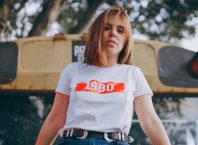What does one get for your money? Everybody wanting to shop for a chunk of school asks that question him or herself. It conjointly happens to be the question this relevant feature can attempt to answer. Is it price defrayal further on high-end gear, or does one get what you wish with cheaper models? Monthly, we will check up on a number of the most affordable and costliest product in an exceedingly given class, testing every to envision what their limits are and assist you discover after you will low-cost it out, and once to place down some further money to urge what you wish.
HIGH/LOW: SLR LENSES
The legendary creative person Henri Cartier-Bresson delineate photography as being regarding what he referred to as “the decisive moment,” capturing that image frozen in time that’s the essence of the topic. Though a lot of what Cartier-Bresson was taking regarding was learning to envision that excellent moment, the instrumentality you utilize conjointly plays a locality in capturing it.
This want for excellent photos is what drives several people to pay megabucks on lenses. One in all the explanations to shop for one Lens Reflex (SLR) or mirrorless camera is that the ability to swap lenses. You will be able to use very different lenses for various things, or upgrade to raise lenses over time. Sure, many photographers do not trouble, projected with the lens that comes with the camera. However the deeper you get into photography, the lot of you understand that you would be happier together with your results if you picked up a high quality lens.
Therefore, however massive is that the distinction between a lens that prices a couple of hundred greenbacks, and one cost accounting over 1000 greenbacks more. What varieties of gains will your cash buy? Are the standard enhancements substantial enough to be detected by the undisciplined eye?


I decided to seek out. I took two lenses and shot a series of pictures with them side-by-side, mistreatment an equivalent camera and settings. Nikon created each the two lenses: a 50mm f/1.4 that prices regarding $350 and a 58mm f/1.4 that prices regarding $1,700, each season to USA courtesy of Borrowlenses.com. I selected two prime lenses like this as a result of they provide higher image quality than comparable zoom lenses, and that is what we have a tendency to be waiting for quality photos. Each lenses supply glorious aperture ranges, and having a large aperture (such because the f/1.4 of these) makes it easier to form a lovely, defocused background in a picture.
Looking simply at the specs of those two lenses, you would assume that they are the same: they need similar focal lengths and the same aperture ranges. Therefore why the massive value difference? My tests show that each are nice lenses, shooting sharp, clean pictures, however that the 58mm lens is deceiver, resulting in pictures of higher overall quality.
One issue to notice here: most up-to-date SLRs keep company with a optical lens as a part of the kit you purchase. These invariable manufacture worse pictures than the mounted focal distance, prime lenses I tested. Take it as scan that each of those lenses is far better than the one that came together with your SLR camera.
Contents [show]
Test 1: The Cat Photo
First, I took photos of a cat sculpture, sculptured by Mexican creative person Jacob and Maria Angeles that is painted with tangled detail. On initial look, the two pictures look identical: each lenses captured the small print of the painting well. However, a better a lot of in-depth} look shows that the 58mm lens captured more detail, that produces a lot of hanging image. Check up on the eye: the 58mm shot (on the proper, click to envision it full size) shows a lot of the small print of the comb strokes and dots that makes for a lot of compelling pic. The background is additionally price wanting at: the defocused foliage incorporates a softer, a lot of organic look on the 58mm shot that helps the sculpture stand out from the jungle (well, my back garden), whereas the 50mm produces a lot of artificial wanting onerous circles with halos that reduce from the sculpture. Photographers discuss with this defocused organic look as Bokeh, and it makes lots of distinction after you try to form the foreground object stand out. A background with lots of Bokeh appearance soft, subtle and non-intrusive, whereas one with the halos and sharp-edged blobs of a less expensive lens attracts the attention removed from the topic.
Test 2: The Selfie
Next, I attempted a portrait. Again, each of the pictures is sharp, with nice detail. however the 58mm lens (on the right) has a footing again: watching details just like the hairs on my chinny chin and also the pores on my nose, the 58mm shot appearance a lot of natural with power tool detail and tone.
Test 3: The Check-In
Shooting on the streets of Cambridge, Massachusetts, I chanced on 2 cherry trees in blossom before of the previous home of Edith Lesley, the founding father of Lesley University. The variations between these 2 shots area unit subtle: each lenses captured an honest quantity of detail across the photographs, capturing the paper hints and reminder the cherry blossoms well. The 58mm (on the proper, click to envision it larger) has the sting here once more, though, with details just like the pink blossoms against the white paint standing out somewhat higher than the 50mm, particularly within the center of the frame.
Test 4: The Landscape
Next was a bucolic shot of a bridge over the Mystic watercourse. For this, I place the camera on a stand and stopped the lens all the way down to f/16 to create certain that I had many depth of field. Again, the 58mm had a small, however vital, edge here, with higher detail and clarity. The reflections of the sun on the watercourse also are telling: with the 50mm, they need a starburst look, caused by lightweight reflective at intervals the lens parts. On the 58mm, the starburst look is a smaller amount visible. To be fair, I may have removed this on each lenses by employing a slightly wider aperture, however the thought here is to match them. If you scrutinize rock bottom right corner of the image on the 50mm version, you will additionally see what quantity detail is lost within the waves, whereas the 58mm image remains sharp to the sting.
Conclusion
I balanced my very own tests with a comparative review of those 2 lenses done by DXOLabs, and that i will positively rate the 58mm over the 50mm. supported the visible details at intervals my very own pictures, and DXO’s objective measurements of sharpness, transmission (the quantity of sunshine the lens lets through) and distortion (the color fringing caused by completely different frequencies of sunshine being diffracted otherwise by the lens elements), it’s clear that whereas each lenses area unit sensible, the 58mm is best.
However, is it definitely worth the additional $1,350? For many shooters, no. The $350 lens shoots wonderful pictures, and plenty of photographers will not notice the delicate variations between the two — particularly if they are not generating giant prints. Camera lenses area unit like wine: after you get to the nice stuff, a delicate improvement prices you additional and a few folks will style the distinction. Others area unit proud of a less expensive bottle that tastes simply fine, and also the $350 50mm f/1.4G lens shows that you simply don’t got to pay that a lot of to induce a lens that’s far better than a budget zoom your SLR came with. Click here for more info.
It is a truth to mention that purchasing a costlier lens is not about to cause you to a far better creative person. Our old flame Cartier-Bresson himself used one camera and one lens—a Leica with a 50mm—for most of his career. However, he was considered one among the best photographers of the twentieth century because of he knew specifically however his camera would perform. an honest creative person takes the time to grasp their instrumentation so that they will get the most effective image, regardless of however pricey their kit is. If you pay $350 on a lens and extremely learn the way to use it, you will be nearer to the perfect of photographers like Cartier-Bresson; World Health Organization used sensible instrumentation to require nice photos.













